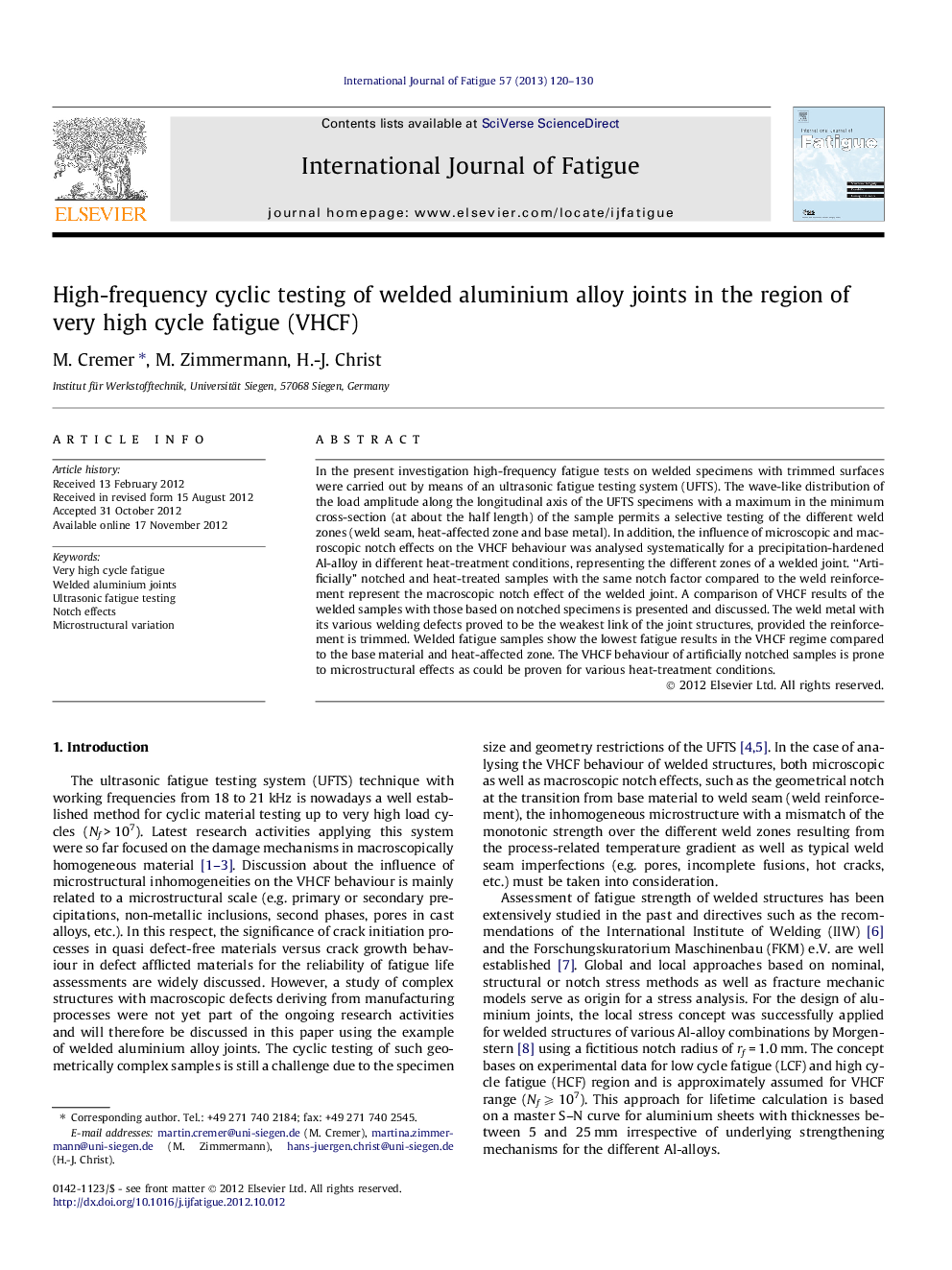| Article ID | Journal | Published Year | Pages | File Type |
|---|---|---|---|---|
| 780835 | International Journal of Fatigue | 2013 | 11 Pages |
In the present investigation high-frequency fatigue tests on welded specimens with trimmed surfaces were carried out by means of an ultrasonic fatigue testing system (UFTS). The wave-like distribution of the load amplitude along the longitudinal axis of the UFTS specimens with a maximum in the minimum cross-section (at about the half length) of the sample permits a selective testing of the different weld zones (weld seam, heat-affected zone and base metal). In addition, the influence of microscopic and macroscopic notch effects on the VHCF behaviour was analysed systematically for a precipitation-hardened Al-alloy in different heat-treatment conditions, representing the different zones of a welded joint. “Artificially” notched and heat-treated samples with the same notch factor compared to the weld reinforcement represent the macroscopic notch effect of the welded joint. A comparison of VHCF results of the welded samples with those based on notched specimens is presented and discussed. The weld metal with its various welding defects proved to be the weakest link of the joint structures, provided the reinforcement is trimmed. Welded fatigue samples show the lowest fatigue results in the VHCF regime compared to the base material and heat-affected zone. The VHCF behaviour of artificially notched samples is prone to microstructural effects as could be proven for various heat-treatment conditions.
